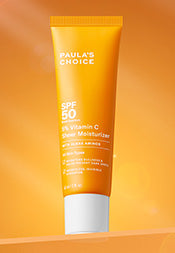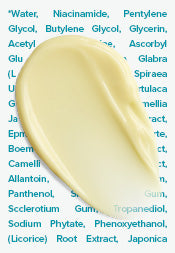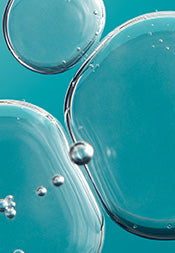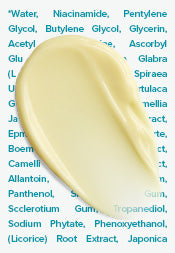Air Pollution and How it Damages Your Skin
No matter where we live, to one degree or another, air pollution poses serious risks to our health. New, ongoing research explains how airborne pollutants affect how your skin looks, feels, and even how it ages.
Some research suggests that pollution is just as bad for the skin as unprotected sun exposure. The need to protect skin from environmental pollution—not just from UV light—is more important now than ever before, and the right skincare is where that protection begins.
What is Air Pollution?
Air pollution refers to the gases or particles released into the air by human activities, such as auto exhaust, manufacturing processes, chemical and petroleum refineries, cigarette smoke, and many others. Most gaseous airborne pollutants don’t penetrate the skin at first; instead, they trigger a cascade of damage on the skin’s surface. Eventually, that damage makes it easier for the pollutants to get into your body.
One type of nongaseous pollutant, known as small particulate matter, is small enough to get into pores, where it becomes trapped and causes ongoing damage. (These pollutants are often referred to as nanoparticles because they’re so tiny.) And simply washing your face isn’t enough to remove these pollution particles once they get into the pores.
Although air pollution is obviously worse in big cities, living in rural areas doesn’t mean you’re free from risk. All forms of pollution move through the atmosphere and water and can settle in soil on the ground, so you can see how it can easily travel beyond the borders of industrialised cities.
How Environmental Pollution Affects Skin
Scientific research has revealed how ongoing, daily exposure to pollution dramatically impacts skin health and appearance. The five types of air pollution that pose the biggest risk to your skin’s appearance include:
- Automobile and truck exhaust
- Cigarette smoke
- Manufacturing by-products (such as phthalates from plastics)
- Small particulate matter (including many volatile organic compounds in the form of aerosols)
- Smog (especially the ground-level ozone it generates)
All forms of pollution cause free-radical damage to the skin, with smog being an especially harmful source. Left unchecked, this damage leads to the breakdown and deterioration of everything the skin needs to look healthy and prevent signs of aging.
Pollution also throws the skin’s microbiome out of balance by significantly disrupting its barrier, exacerbating the effects of all types of air pollution. The list of problems that airborne pollutants cause is not a pretty picture:
- Brown spots
- Uneven, dull skin tone
- Breakdown of the skin’s supportive elements (wrinkles)
- Enlarged pores
- Sensitive, redness-prone skin
- Uncomfortably dry, itchy skin
Small airborne pollutants get stuck in pores, causing acne-like breakouts (often called chemical- or pollution-induced acne) and triggering damage in the deeper layers of skin, right where wrinkles and most discolourations form.
As mentioned above, when the skin’s surface breaks down, many types of airborne pollutants are small enough to get into the body through the impaired skin. That’s why keeping the skin’s surface intact and healthy is vital for its health and appearance.
Of course, breathing remains the most direct route for air pollution to get into the body. You can help reduce this damage by not smoking and by eating a superfood-rich diet full of antioxidants. The same is true for skin: There are very important steps you can take to limit environmental damage to your skin.
|
Stop Skin Damage Today  DEFENSE Antioxidant Pore Purifier |
How to Protect Skin from PollutionTruth in beauty: You can’t completely protect your skin from the visible effects of pollution. It’s simply too pervasive to stop altogether. What you can do is shield skin as much as possible from airborne pollutants and the effects they can trigger. How? Use skincare products with anti-pollution ingredients that interrupt the cascade of damage. Look for anti-pollution skincare products formulated with antioxidants that interrupt the process of pollution’s effects on the skin. However, it takes more than antioxidants. Your pollution-fighting products should also include potent soothing ingredients that neutralise the damage air pollutants cause and replenish the ingredients needed to fortify the skin’s surface. It’s also more important than ever to use leave-on AHA or BHA exfoliants because they help dislodge the pollutants trapped in the pores. Skin-brightening products are also exceptionally helpful because pollution has clearly been shown to discolour and darken skin, no matter your ethnicity or amount of sun exposure. |
Is Blue Light a Pollutant?Although technically not a pollutant, daily blue light exposure is a serious problem. The issue is not so much from the environment. It’s from our digital devices. Whereas environmental blue light from the sun is far away and diffused, the blue light from your cell phone, tablet, or computer brings blue light within inches of your face. It turns out this daily up-close exposure is exceedingly damaging, especially for the eyes—we’re talking about potential blindness here! Anti blue light skincare products with antioxidants, particularly those from plant pigments such as xanthophylls and grape polyphenols, can help protect skin from the damage by blue light. It’s also recommended to set your devices to yellow light (commonly known as night mode). Problem solved—if only the problem of air pollution was as quick to fix! |
Reclaim Your Radiance 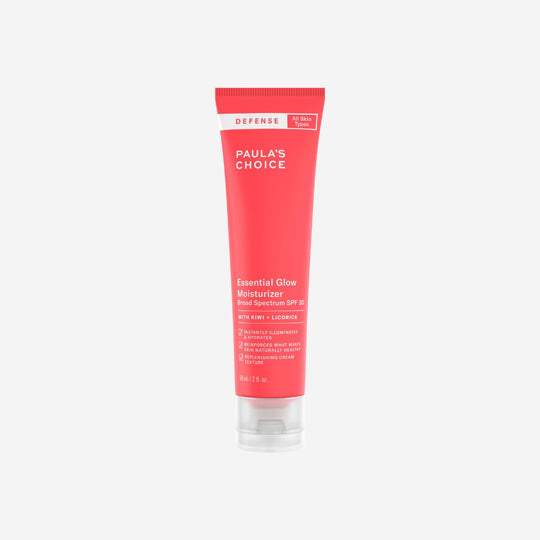 DEFENSE Essential Glow Moisturizer SPF 30 |
Learn more about anti-aging & wrinkle solutions.
Shop anti-pollution skincare from Paula’s Choice Singapore today to protect your skin.
References for this information
Journal of Dermatological Science, April 2018, ePublication; and December 2014, pages 163–168
Cosmetics, Volume 5, January 2018, ePublication
Genes, October 2017, ePublication
Indian Journal of Dermatology, Venereology, and Leprology, July-August 2017, pages 415–423
Experimental Dermatology, May 2017, pages 384–387
Advances in Dermatology and Allergology, February 2017, pages 6–14
OMICS, November 2016, pages 615–626
Life Sciences, May 2016, pages 126–134
Journal of the European Academy of Dermatology and Venereology, December 2015, pages 2326–2332
Frontiers in Environmental Science, May 2014, ePublication


